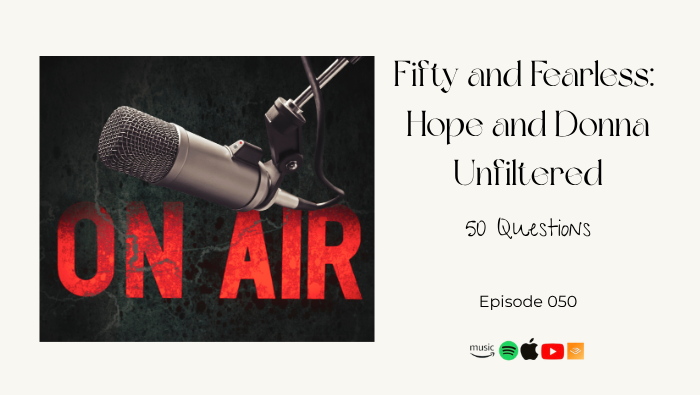Character Alchemy: Crafting Complex Characters, Episode 44
- Donna Carbone
- Apr 23
- 3 min read

When writing a novel, it’s essential to develop complex, authentic characters that your readers come to care about in some way. In this episode, we’ll talk about ways in which you can create nuanced characters your readers can connect to, love or hate. And we’ll provide models of characters as examples and a FREE DOWNLOAD of exercises to help you achieve them in your work.
SHOW NOTES:
Develop Rich Backstories A character's history shapes their motivations, fears, and desires.
Tips:
Create a timeline: Map out significant life events that influenced their worldview.
Identify key moments: Focus on pivotal experiences (trauma, achievements, relationships) that define their personality.
Think beyond the plot: Include details that might not appear in the story but inform how the character acts.
Embrace Flaws and Contradictions Complex characters aren't perfect; their inconsistencies make them feel real.
Tips:
List strengths and weaknesses: Ensure these traits influence their choices and conflicts.
Show contradictions: For example, a character could be brave in public but insecure in private.
Avoid clichés: Dig deeper into why they have certain flaws—what past experiences contributed?
Unique Traits: Include traits or mannerisms distinct to your character, something that might reveal an aspect of who they are, how they feel, or a wound from their past manifesting itself in the present
Focus on Internal Conflict Characters with layered emotions and dilemmas feel more authentic.
Tips:
Ask "What do they want vs. need?": These can be in conflict, driving emotional tension.
Highlight tough choices: Put characters in situations where they must choose between equally difficult options.
Use internal monologues: Show conflicting thoughts to reveal depth.
Create Distinct Motivations and Goals Well-defined motivations make characters’ actions believable and compelling.
Tips:
Define clear objectives: What does the character want, and why?
Explore deeper motivations: Think about why their goal matters—what emotional need does it fulfill?
Allow evolution: As the plot progresses, let motivations shift based on experiences.
Show Relationships and Reactions How characters interact with others and the space around them can reveal hidden aspects of their personality.
Tips:
Vary dynamics: Show how they act differently with friends, strangers, or enemies.
Use dialogue and body language: Let their behavior subtly convey emotions and attitudes.
Reveal what they notice in the setting: This can be telling of personality or feelings about a give place
Highlight growth: How do relationships challenge or change them over time?
Examples of Well-Developed Characters
Elizabeth Bennet (Pride and Prejudice)
Complexity: Smart and independent, but her pride and quick judgments lead to misunderstandings.
Takeaway: Her growth comes from recognizing her own flaws, not just others'.
Newland Archer (The Age of Innocence)
Complexity: because he embodies the conflict between his personal desires and the rigid social expectations of New York high society, reflecting his internal struggles as he grapples with love and duty.
Takeaway: His character is the exploration of how societal pressures can shape individual choices and the quest for personal fulfillment amidst conflicting obligations.
Jay Gatsby (The Great Gatsby)
Complexity: Driven by love and ambition but blinded by idealism.
Takeaway: His contradictions (hopeful yet secretive) create a character who is both admirable and tragic.
Katniss Everdeen (The Hunger Games)
Complexity: Strong and protective but struggles with vulnerability and emotional intimacy.
Takeaway: Her internal conflict—survival versus morality—adds depth to her choices.
Tyrion Lannister (A Song of Ice and Fire)
Complexity: Witty and intelligent but hides pain under sarcasm. His motivations are tangled in a need for approval and rebellion against his family’s cruelty.
Takeaway: His constant state of conflict makes him the ultimate complex character readers love to love, but sometimes hate
SOURCES & LINKS
Writers Helping Writers Series:The Thesaurus Collection by Angela Ackerman & Becca Puglisi (showing vs. telling)
The Emotion Thesaurus: A Writer’s Guide to Character Expression
The Conflict Thesaurus, The Emotional Wound Thesaurus…
Launch Pad: The Countdown to Writing Your Book, Emma Dhesi, Grace Sammon
Story Genius and Wired for Story, Lisa Cron (structure and character development)
DO NOW: Character Development Exercises:
Backstory Journaling, Flaw vs. Virtue Chart, Internal Conflict Mapping, Dialogue Scenarios and Relationship Snapshot
FREE DOWNLOAD Character Development Exercises
Authors Talking Bookish https://www.authorstalkingbookish.com
Hope Gibbs, author of Where the Grass Grows Blue https://www.authorhopegibbs.com/
Donna Norman-Carbone, author of All That is Sacred & Of Lies and Honey https://www.donnanormancarbone.com
If you found value in this content, please LIKE, SUBSCRIBE and SHARE. Thank you



Comments